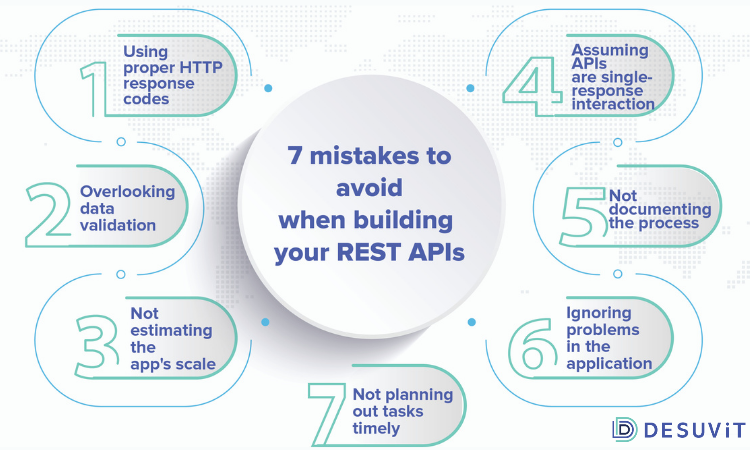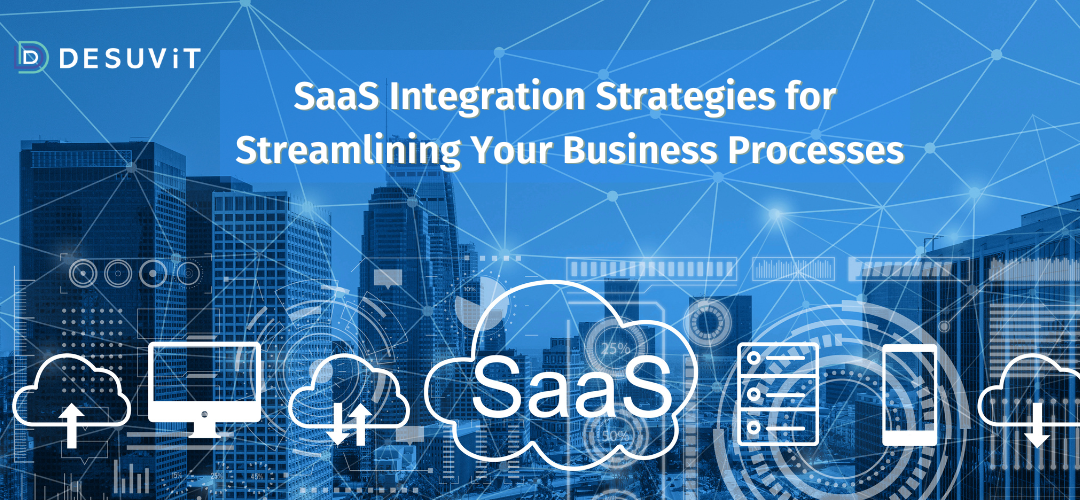REST APIs are gradually becoming some of the most critical factors in tech development. Be it mobile applications, cloud apps, or even automated business functions; REST APIs have a ton of usage in this domain. Moreover, it is continuously growing with every passing day.
To simply put it, REST APIs or Representational State Transfer is written to perform and receive requests through HTTP. With this, you can benefit from the preexisting protocols for your Web API.
REST APIs are beneficial for developers. Their numerous applications and advanced approaches help in many areas. However, many developers get carried away with this type of design. This is because the possibilities are endless, and if you fail to follow basic rules, you might land in hot waters.
Developers need to remember that merely providing data and processing it correctly is not sufficient. This in no way will determine whether you built your REST API right or not.
You need to remember that many users will try your application, and if it is not convenient for them to use, you have failed. Continue reading to find out some of the most common mistakes you can avoid while building your REST API!

7 Common Mistakes That Can Ruin Your REST Apis
Mentioned below are some of the most obvious errors that you can avoid while creating your REST API.
1. API Response Codes
HTTP responses are crucial to ensure the working of your application. These responses need not always be successful ones. You will need to focus on error responses to make sure you know how your application is faring online.
Most developers limit themselves to a few errors. Unless you know the responses, you will not tweak the program and make any necessary changes. Without error responses, you will also have a hard time sending any vital information to your users.
Knowing about HTTP response status codes will help developers improve their applications significantly. HTTP response codes are a response to a request made to the server. So, the particular HTTP status code tells us if the HTTP request was successfully accomplished.
The HTTP responses are generally classified into five main categories. For instance, informational HTTP responses are codes from 100-199, which show that the request was successfully acquired and understood.
Successful HTTP responses are between 200-299 which mean that the request was received, understood, and successfully accepted by the server.
Redirects are from 300-399 which tell the client that they must complete one more action to complete their request to the server. Errors from the client side are client errors HTTP response codes from 400 to 499. From 500 and 599 are server errors that specify that the request was successfully accepted but an error caused it from being fulfilled.
The HTTP response codes shown to users need to be easy to understand. They must have sufficient context so that it is comprehensible.
2. Validate Data
This may sound like a relatively common thing to do. However, many developers overlook this step and end up ruining their entire REST API design. Programmers need to add data validation to their to-do lists and make it a priority.
This is because no matter how significant your operations are, there is always a possibility of someone messing up. You might consider your application to be a brick wall. However, eventually, someone will find a gap in it.
If you do not validate all the data you input, there are chances that your API will break in the future. This will have nothing to do with the way you designed it. Making this one small error where you forget validating your data could have severe and frustrating consequences.
For instance, when a user enters an empty value in a non-obligatory field where there is a value needed, it might break. You can quickly avert such situations by validating all the data you input in your application as a programmer.
3. Estimating The Scale

Another important factor that your application cannot do without is scalability. When you develop a program, chances are you have an estimated user number in mind. You design your product with this in mind. This way, all the operations run smoothly as long as only these many people use the program.
What most developers choose to ignore is the potential growth of their program. You can start small, but it is also essential to think about how much your application will grow. If your platform is not scalable, you will have to face many difficulties scaling in the future.
A scalable platform will allow you to grow with ease. The first thing you need to do is pick out a scalable server and separate the application layers quickly. Make sure you do not make any rigid decisions that cannot be changed in the future.
You do not want to use two or more servers once your application grows. It is a complicated process that creates a blunder in even the simplest of operations. In such cases, you can try file synchronization. However, it is not too fruitful either. The best way to avoid such a problem is to store files received by users in a remote location. You can also store these files by uploading them to a shared file location.
Today, cloud computing is becoming increasingly popular to host your applications. The most popular ones, viz. Microsoft Azure, AWS, and Google Cloud give you scalability with just the click of a button. They can even do the auto-scaling when your application/REST APIs meet an unexpected load.
Thinking cloud or some other mechanism for scaling when the demand increases can save your APIs from potentially failing when the load increases.
4. Assuming APIs Are A Single Request And Single Response Interaction
Visualize your API as an end-to-end program. You cannot expect this intricate application only to have a single request and single response interaction. You can test you’re API by using a single endpoint call and analyzing the HTTP status.
The popular BDD/TDD method is not of great help either. Just because the requirement specifications for your API are met, your application is not perfect. There is a lot that goes into it, and you need to test it out more efficiently.
The best way to do this is by making sure you test your application as an end-user would. You must see how your application performs in real-time with external factors like traffic on the platform. You know your application is useful when there is easy integration!
5. Document Your APIs
Documenting everything you do might be way more important than you think. This is because you need to focus your attention on your customers and users instead of just developing the application.
Generally speaking, developers are going to be the primary demographic who will learn how to use it. So, it would be best if you had an easy to understand and easy to grasp application. You can trust your employees to know precisely what they are doing for a certain period.
Over time, the people working for you might change. Moreover, it is also possible that the application’s functions might slip your employee’s mind. It is a prevalent human error that can be easily avoided.
Make sure you write everything down and document your processes. This way, you can have a note of the way your application works too. It will be much easier for you to pick out any discrepancies in its function.
If you feel like doing this on your own is a tedious task, you can seek help from reliable preexisting solutions. You can opt for solutions like RAML, NelmioApiDoc, or Swagger to get your job done!
6. Monitoring Your APIs
Given that your application is your ultimate priority. However, this does not mean that your API design is flawless if the application runs correctly. The API design is the foundation of your application. If you ignore errors in the design, it is not long before your application fails.
Every time there is a problem in your application, you need to look into its foundation. Troubleshooting problems are done right from the base design of the application. You will need to get into the API, GUI application, and integration layer to figure out where the problem lies.
If you know your API inside out, you will have no trouble fixing this problem. Moreover, if you focus on your API right from the start, you will significantly reduce any issues that might occur in your application.
To illustrate: if a bug is found in the requirements-gathering phase, the cost could be $100. If the product owner doesn’t find that bug until the QA testing phase, then the cost could be $1500. If it’s not found until production, the cost could be $10,000.
And if the bug is never found, it could be secretly costing the company money. A 2003 study commissioned by the Department of Commerce’s National Institute of Standards and Technology found that software bugs cost the US economy $59.5 billion annually.

7. Time Efficiency
Using time efficiently should be one of your top-most priorities when you build the application. You must make sure that most time-consuming operations in your application are rectified.
This is one of the most common and frustrating errors made by developers. If your application takes a lot of time to load, chances are your user will lose interest. Keep your application nifty and efficient by delegating tasks.
The easiest way to do this is by making an external processor handle tedious tasks like sending emails and uploading pictures. This way, your HTTP is free instantly, and all the other processes can go on smoothly without wasting too much of your user’s time.
To Conclude With
There are a large number of errors that most developers commonly make while building their REST API. This is not because you lack the skill. However, it could be because many other essential tasks need to be undertaken that you often overlook these mistakes.
Make sure you are thorough with your API design if you want your application to run smoothly. What’s more, the errors mentioned above can be easily rectified with a simple revision done by the programmer. So, be vigilant with your development and focus on your REST API as you would on your final application!
If you need help with application program interfaces, do reach out to us! Desuvit is the expert when it comes to REST APIs.
Desuvit is a Norway-born software development company delivering Custom Software Development, Mobile Apps, and Web Applications Development for various verticals and business domains. We offer end-to-end solutions for companies with no software or IT division, Startups, and companies that need to scale their software development efforts but lack the expertise required. We help our clients in growing their businesses so we can grow with them. Some of the technologies we work with: .Net, Azure, Microservices, Azure functions(Serverless computing), React Native, Flutter, React JS, TypeScript, Angular, NServiceBus, Azure Service Bus, Azure Queues, SQL Service, MySQL, Cosmos DB, etc.
Enjoyed this article? Subscribe for more valuable and great content !
By subscribing, you agree with our privacy policy and our terms of service.






